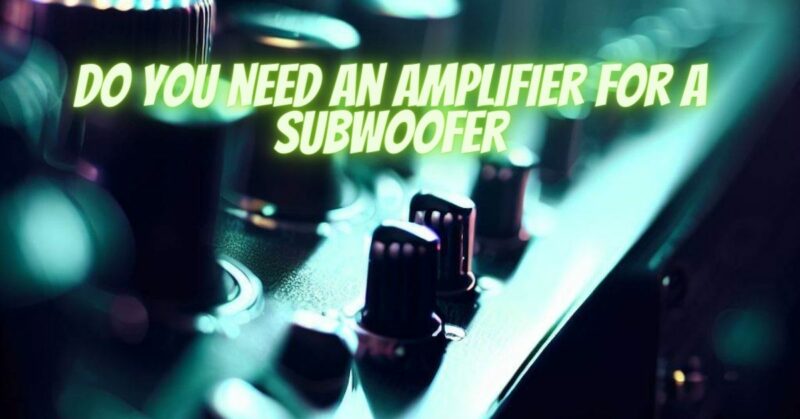When setting up a home audio system or a dedicated home theater, the question often arises: Do you need an amplifier to power a subwoofer? Subwoofers are essential for delivering deep, rumbling bass that can add depth and impact to your audio experience. In this article, we will explore the role of amplifiers in subwoofer setups and whether they are necessary.
Understanding Subwoofers
Subwoofers are specialized speakers designed to reproduce low-frequency sound, commonly referred to as bass. These low frequencies, typically below 100 Hz, provide the foundation for impactful and immersive audio experiences, especially in movies and music with heavy bass components.
The Role of Amplifiers
In most cases, subwoofers require an amplifier to function effectively. Here’s why:
- Power Requirements: Subwoofers demand more power to produce low-frequency sounds at high volumes. An amplifier is needed to provide the necessary power to drive the subwoofer’s larger, heavier driver.
- Low-Frequency Signals: The low-frequency signals generated by audio sources, whether from a stereo receiver, home theater amplifier, or dedicated subwoofer output, are often insufficient to drive a subwoofer directly. An amplifier steps up the power to match the subwoofer’s requirements.
- Crossover and Equalization: Many subwoofers come with built-in amplifiers that include essential features like crossover controls and equalization. These functions help tailor the subwoofer’s output to seamlessly blend with the rest of your audio system.
Types of Subwoofer Amplifiers
There are two primary types of amplifiers used with subwoofers:
- Built-In Amplifiers: Some subwoofers come with integrated amplifiers, often referred to as “powered” or “active” subwoofers. These subwoofers have their own built-in amplification and are a convenient option for users seeking an all-in-one solution.
- External Amplifiers: In other setups, a separate external amplifier, known as a “subwoofer amplifier” or “subwoofer amp,” is used to power passive subwoofers. Passive subwoofers lack built-in amplification and rely on an external amplifier for power.
When Might You Not Need an Amplifier for a Subwoofer?
While amplifiers are typically necessary for subwoofers, there are exceptions:
- Powered Subwoofers: If you have a powered subwoofer with a built-in amplifier, you won’t need an external amplifier. Powered subwoofers are self-contained and designed to be connected directly to a receiver or audio source.
- Dedicated Subwoofer Outputs: Some AV receivers and home theater amplifiers feature dedicated subwoofer outputs that are designed to power a subwoofer directly. In such cases, an external amplifier may not be required.
In most situations, an amplifier is necessary to power a subwoofer effectively. The amplifier provides the required power, ensures accurate reproduction of low-frequency sound, and offers control over crossover settings and equalization. However, if you have a powered subwoofer with an integrated amplifier or a receiver with a dedicated subwoofer output, you may not need an additional amplifier. It’s essential to consider your specific audio setup and the type of subwoofer you have to determine whether an amplifier is required for your subwoofer system.


